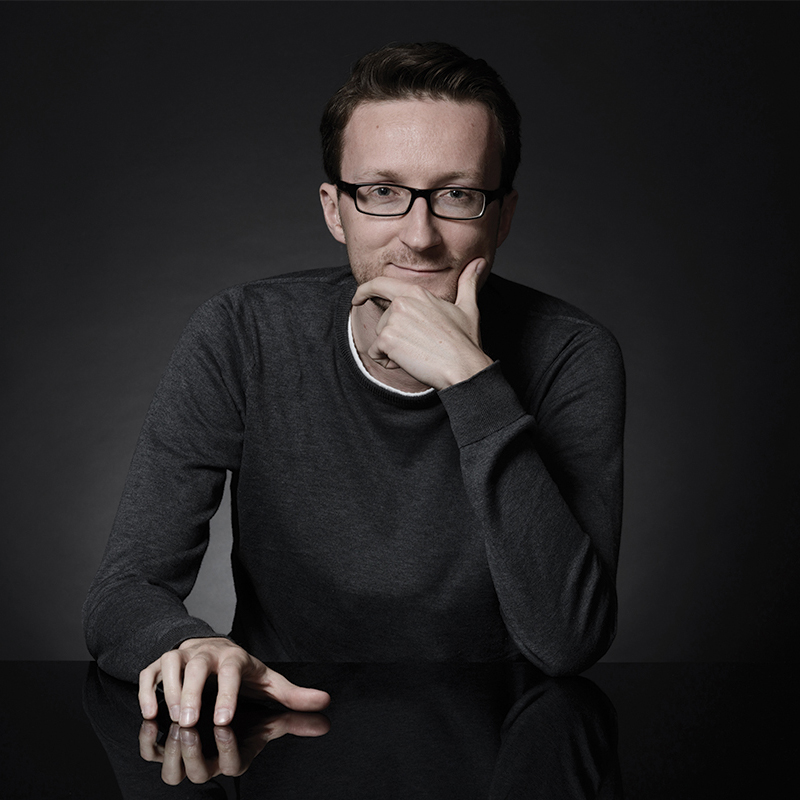Tomasz Lis| October 2022 | Warsaw
One of Martin Scorsese’s most outstanding cinematic creations is an adaption of Edith Wharton’s book The Age of Innocence. The movie’s opening scene takes place in the opulent surroundings of what was arguably the first long-standing, purpose-built opera house in New York: the Academy of Music. Its predecessor, established by the famous librettist and Mozart’s collaborator Lorenzo da Ponte, had lasted merely two years. The main protagonist of the book, played impeccably on screen by Daniel Day-Lewis, is Newland Archer. He has just arrived fashionably late, a common practice in those days when the night was young and no one would dream of going home before midnight. Nothing as mundane and prosaic as trains to catch or a restaurant kitchen closing at half past 10. The opera was where high society met to converse, gossip, observe and perhaps hear a bit of music, which in this particular case is Gounod’s Faust, one of the most successful and frequently staged operas of the 19th century. By the beginning of the 20th century, in Paris alone, Faust had reached nearly 3,000 performances, breaking all conceivable records.
The casts were as glittering as some of the audience members and included nearly all the greatest singers of the day. Among them were two remarkable brothers whose careers marked the apex of the golden age of opera. Jean and Édouard de Reszke were born into a family of talented artists and entrepreneurs. Their father was a successful businessman, philanthropist, political activist and owner of the Saxon Hotel, once the largest in Warsaw and still in existence. Their mother, Emilia Ufniarska, came from Galicia and was a mezzo-soprano of considerable distinction, who had studied with the great Manuel Garcia and his superstar daughter Pauline Viardot. Manuel and Pauline were members of an even more famous musical dynasty.
Garcia took part in the premiere of several of Rossini’s operas, singing title roles in The Barber of Seville and Othello, while his daughter became one of the most celebrated singers of the 19th century. She debuted at the age of 16, creating a sensation with her exquisite technique. Such was her magnetism and charisma that the list of men she was involved with romantically would require several more pages and was as illustrious as her operatic career.
Garcia’s second daughter was the equally celebrated and legendary Maria Malibran, while his son, though less successful on stage, went on to become one of the most renowned vocal teachers of the century. Not bad for one family!
Jan Reszke and Emilia Ufniarska had five children, of whom three became singers. Jean was born in 1850, Josephine in 1853 and Édouard in 1855. Josephine, though nowadays nearly forgotten, had a relatively short but successful career, often taking part in the same productions as her brothers. Her Covent Garden debut in 1881 in Verdi’s Aida was shared with her brother Edouard, while all three siblings participated in the Paris premiere of Jules Massenet’s Herodiade.
Josephine’s brilliant career came to an abrupt end in 1885 when she married Baron Leopold Julian Kronenberg, wealthy banker, politician and philanthropist. She died six years later after childbirth.
Jean de Reszke, arguably the greatest tenor before Enrico Caruso, began his artistic journey as a baritone and without much success. After only two years he realised how fruitless his efforts were and began a process of becoming a heroic tenor with a help of the famous Italian teacher Giovanni Sbriglia. His first, inauspicious break came in Madrid, where in 1879 he sang in Meyerbeer’s Robert le diable. This is one of those mammoth operas lasting for hours and beloved of 19th-century audiences, nowadays so rarely unearthed, not only because of their sometimes-outdated musical virtues but also because of their extremely high vocal demands. This music simply dies when sung badly. One could say the same about Handel, who wrote exclusively for the best singers in the world, but Handel was a genius, while Meyerbeer perhaps not. Sometimes one can understand why most of the aristocratic audience arrived late and listened only to the best bits.
Jean’s first triumph came in Paris on 1 March 1884. At the invitation of Jules Massenet he was persuaded to sing the role of Saint John the Baptist in the opera Herodiade. He shared the stage with his brother and sister and instantly became the darling of the audience and the leading tenor of the Paris Opera. His collaboration with Massenet continued with another premiere the following year. Le Cid, about the famous Castilian knight fighting infidels in 11th-century Spain, was crafted specially for him and became an instant success. The star-studded cast also included his brother Édouard and the great French bass Pol Plançon, all in the presence of the president of the French Republic, François Grévy. By the end of World War One, Le Cid had been seen 150 times before it gradually faded from the repertory. It was eventually revived in the 2014/2015 Paris season for Roberto Alagna.
Édouard de Reszke, Jean’s younger brother, was initially less keen on an operatic career. His interests lay in agriculture and landowning but after some persuasion he changed his mind. His first significant debut, as Ramfis in Verdi’s Aida, came in 1876 under the baton of the composer himself. Perhaps we should explain at this point why people such as the Reszke brothers, Nellie Melba, Emma Eames, Pol Plançon, Adelina Patti, Enrico Caruso and Lilly Lehmann were such extraordinary singers, performers and artists. Apart from their superb technique, the sheer beauty of their voice and their often great personalities, they had a very thorough understanding of style and often knew the composers with whom they studied their roles. They understood the idea of bel canto, which was not just beautiful singing but also an exact control of the intensity of vocal tone and absolute evenness between different parts of the voice, so, when it moved from top to bottom, its quality, legato and colour remained intact. They recognised a distinction between the “diapason tone” (produced when the larynx is in a relatively low position) and the “flute tone” (when the larynx is in a higher position). They knew that text and declamation were absolutely crucial, and so were vocal agility and clear articulation. Singers often sang in their native languages or a language they spoke perfectly so it felt entirely idiomatic.
Édouard’s first spectacular success was at London’s Covent Garden and the Drury Lane Theatre, recently so beautifully restored by Andrew Lloyd Webber. As an example, his 1883 season saw him perform in nine operas, among which were The Marriage of Figaro and The Flying Dutchman.
Even though both brothers had mastered a vast range of roles, their true specialisation was French repertoire and Wagner. We have already mentioned their great predilection for music of Jules Massenet but equally famous, long-lasting and exemplary were their interpretations of music by Charles Gounod. Their performances of Faust, which I have already mentioned, as well as Roméo et Juliette, were lauded on both sides of the Atlantic. Among many stellar and unforgettable casts we may recall one June evening of 1889 when Jean and Édouard were partnered by the great Nellie Melba. George Bernard Shaw, equally famous and infamous for his sharp wit and brilliant and provocative remarks, wrote a review of the night for The Star:
“Mr Jean de Reszke is an artist who cannot be described in a few words. Though a highly intelligent one at his best, he has moments of naïveté – not to say stupidity – which seems to run in his gifted family. The charm of De Reszke lies in the beauty of his voice, his sensitively good pronunciation and the native grace and refinement of his bearing, all of which make his manliness, his energy and his fire quite irresistible. The charm of the man may be separated from the interest in his performance, which is created almost entirely by his declamation. When he exclaimed ‘O douleur! Capulet est son père, et je l’aime’ the effect was electric. At the end of the balcony scene, his half whispered ‘Adieu, jusqu’a damain – jusqu’a damain’, will surely be remembered by many women in the audience.
“But the honour among the basses went, of course, to Édouard de Reszke, who had a tremendous time of it as Friar Laurent. The family naïveté [Shaw clearly likes the word as he bangs on about it] already hinted at peeped out in such brilliant readings as Dieu, qui fit l’homme à ton image delivered in the stentorian manner of master builders when they seek the ear of a bricklayer on a very high scaffold, and the magic word ‘femme’ marked by sudden subsidence to a tenderly respectful pianissimo. But the marriage service and the potion scene delighted the audience; and a special cheer was always received for Frere Édouard when the rest, having passed before the curtain, left him – he coming last – for a moment in sole possession of the proscenium.”
Some artists simply can’t leave the stage, and they sing – or at least pretend they are singing – till their voice is no longer there. No such case here. Jean married a countess and slowly limited his performance load. Worth mentioning is his great portrayal of Siegfried in the Paris production of Wagner’s opera in February 1902. Both brothers had also performed at numerous private and public galas in the presence of the British Royal Family. Queen Victoria was an ardent fan and a friend of both.
Jean subsequently busied himself breeding racehorses in Poland as well as teaching singing in Paris and Nice on the French Riviera. He had a lovely villa down there. His pupils came from a variety of countries and included such splendid names as Bidu Sayão, Claire Croiza, Arthur Endrèze, Mafalda Salvatini, Maggie Teyte and Miriam Licette. Even the already-well-established Austrian tenor Leo Slezak took lessons from de Reszke in 1908–1909, seeking advice on how to further improve his vocal technique.
Édouard settled in London but also bought a large estate in Poland, in Garnek near Częstochowa, where he lived till his death in 1917.
Their lives and careers give a fascinating snapshot of an era long gone but not forgotten. Unfortunately, their recordings remain few and far between, while some of their legendary partners such as Pol Plançon have been luckier. Nevertheless, activate your time machine and be enchanted. It’s worth the effort!

Remarkable lightness of touch. His interpretations are highly sensitive, but also engaging and communicative.
– Fanfare Magazine
Tomasz Lis is an exceptional pianist with passion for arts. In 2019 he co-founded Bespoke Tour – Concierge Travel Agency organising luxury tours to Poland, focusing on art, music and fine dining. For more details visit bespoketour.co and tomasz-lis.com.

